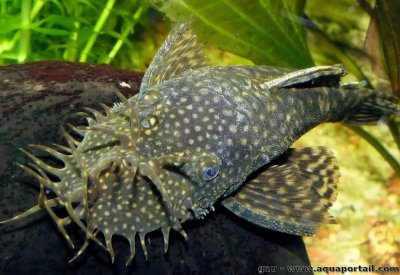- Joined
- Oct 29, 2002
- Messages
- 36,452
- Location
- East of Suez
http://news.bbc.co.uk/1/hi/sci/tech/3192935.stm
New species uncovered in Venezuela
Scientists working in the jungles of Venezuela have discovered 10 new species of fish and a previously unknown species of shrimp.
Among the new discoveries, revealed by US-based Conservation International, was an armoured catfish whose spiky head earned him the nickname "punk" and a piranha that eats fruit as well as flesh.
The group are now calling on the Venezuelan Government to protect the Caura River Basin, where the species were found, designating the 4,500-hectare (11,115-acre) area a wildlife reserve.
"For its size, it's incredible what the area has. It's a hot spot that should be protected," said zoologist Antonio Machado, who helped direct the research.
Area under threat
The Caura River Basin, in the state of Bolivar, is an area of pristine tropical forest and waterways tucked away in the highlands, about 500 kilometres (300 miles) south-east of the Venezuelan capital Caracas.
Conservationists are concerned that the area will fall prey to encroaching human settlements as well as the adverse effects of increased farming and fishing.
The region could also be threatened by future hydroelectricity plans, the group said.
"The Caura River Basin requires immediate and urgent protection as a wildlife reserve," said Mr Machado, who described the region as a biological "hotspot".
One of the most colourful discoveries was a green and red variety of the Bloodfin Tetra family - a type popular with aquarium owners - which has been given the Latin name Aphyocharax yekwanae in honour of the Ye'Kwana Indians who live in the basin.
"These indigenous people depend on the water," Mr Machado explained.
The omnivorous piranha, which supplements its diet with fruit from submerged trees, was called Serrasalmus.
While the tentacle armoured catfish has been formally dubbed Ancistrus, the team of international scientists that found it on their expedition in 2000 gave it the nickname "punk fish" because of its spiky head.



